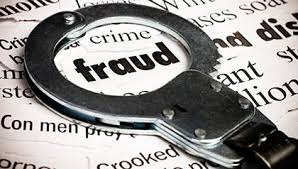Make It Your Business Not to Be a Fraud Victim
 Occupational fraud exacts a frighteningly high toll on small businesses every year, according to data from the Association of Certified Fraud Examiners. With more than 70,000 members, ACFE is the world's largest anti-fraud organization as well as a premier provider of anti-fraud education and training.
Occupational fraud exacts a frighteningly high toll on small businesses every year, according to data from the Association of Certified Fraud Examiners. With more than 70,000 members, ACFE is the world's largest anti-fraud organization as well as a premier provider of anti-fraud education and training.
In ACFE's "Small Business Fraud Prevention Manual," the median annual loss to fraud among small businesses -- defined as those with less than 100 employees -- is estimated at $155,000.
Small Businesses Hit Hard
ACFE also points out that 30.8 percent of all occupational fraud occurs among small businesses. These statistics indicate that fraud hits disproportionately higher at the companies that are least financially able to cope with such losses and that lack adequate personnel and resources to police against fraud.
Companies with 100 to 999 employees experience 22.8 percent of all occupational fraud, according to ACFE data. Companies with 1,000 to 9,999 employees account for 25.8 percent of all occupational fraud cases, and corporations with 10,000 or more employees experience 20.6 percent of all such fraud.
So, just what is occupational fraud? And what can be done to reduce its impact on small business?
What Is Occupational Fraud?
ACFE defines occupational fraud as "the use of one's occupation for personal enrichment through the deliberate misuse or misapplication of the organization's resources or assets."
Instances of occupational fraud occur at almost every organization, says ACFE, and the culprits range from entry-level clerks to top executives.
As you might expect, occupational fraud comes in a wide variety of forms, although certain forms are more common and occur with a high degree of regularity among businesses of all sizes.
Billing Fraud Widespread
Among the small businesses ACFE surveyed for its report on occupational fraud, billing fraud was the most widespread form observed. Of the companies surveyed, 28.7 percent reported cases of billing fraud for a total of 154 cases.
Other forms of fraud widely reported by the small businesses surveyed included check tampering, reported by 26.1 percent of businesses surveyed; corruption, 25.5 percent; skimming, 21.6 percent; expense reimbursements, 16.8 percent; non-cash, 14.9 percent; cash on hand, 14.7 percent; payroll, 13.4 percent; larceny, 12.3 percent; and financial statement fraud, 5.6 percent.
How to Protect Your Business
So now that we've established a better definition of what's actually involved in occupational fraud, you're probably asking how you can go about protecting yourself against fraud.
Among its other responsibilities, the U.S. Small Business Administration is the federal government agency charged with protecting the interests of small business concerns.
To that end, the SBA has some suggestions that should help small business owners protect themselves against this particularly insidious form of fraud:
- Protect Bank and Credit Card Accounts: As a first step, SBA counsels small business owners to totally separate their personal banking and credit card accounts from their business accounts. Be scrupulously careful about sharing credit card information with any but the most trusted employees and outside companies. Switch to online bill pay, and monitor your business's online banking and credit card accounts on a daily basis.
- Secure IT Infrastructure: A good deal of damage can be done by insiders who gain access to sensitive data on your company's computer system. To minimize this threat, limit access to only your most trusted employees. While you're at it, you can protect against cybercriminals from outside your company by installing the very latest versions of anti-virus, malware, and spyware detection software.
- Use a Dedicated Computer for Banking: Handle all of your business's financial transactions through a single computer that's been dedicated expressly for this function. Again, restrict access to only those employees with a need to know.
- Establish a Password Policy: Password-protect all sensitive financial data, giving the relevant password to only those assigned to handle financial matters. Use some imagination in thinking up passwords that are complex and difficult to figure out. Change passwords frequently, at least once every 60 days.
- Educate Your Staff: Sometimes members of your own staff can help spot cases of fraud if they know what to look for. Educate all staff members on what to look for.
- Consider Background Checks: Sadly, even the most trusted employee sometimes turns on his employer and engages in fraudulent behavior. In selecting candidates for jobs that involve handling cash, high-value goods, or access to sensitive company or customer data, consider doing pre-employment background checks.
- Take Out Insurance: Because no business is invulnerable to occupational fraud, you might want to consider taking out an insurance policy to compensate you from losses due to computer fraud or cybercrime.
Don Amerman is a freelance author who writes extensively about a wide array of small business and personal finance topics.

 Delicious
Delicious Digg
Digg StumbleUpon
StumbleUpon Propeller
Propeller Reddit
Reddit Magnoliacom
Magnoliacom Newsvine
Newsvine
Comments
Post new comment